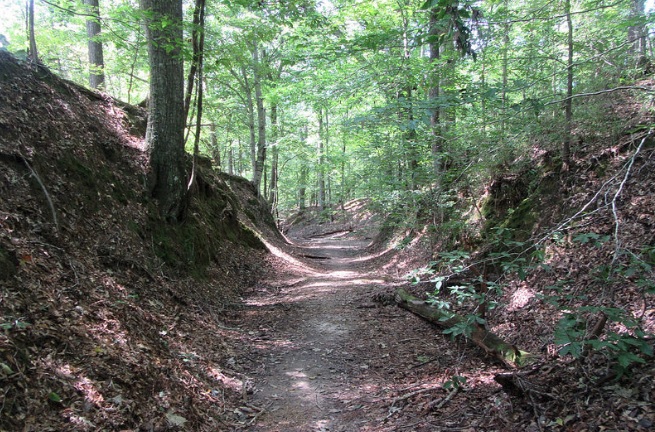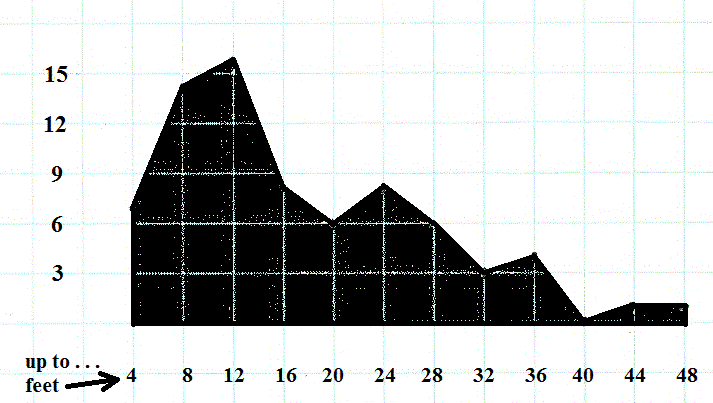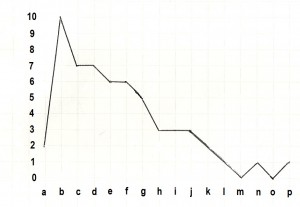By the living-pterosaur expert Jonathan Whitcomb
Early in June of 2018, I began communicating with Ruth Wilson, of Clinton, Mississippi. Here’s part of the first email she sent me (slightly edited for punctuation and spelling), and we continued with more emails about her sighting of an apparent living pterosaur:
Hello, I don’t know exactly if this is where to tell you this. . . . not sure of the exact year but I know it was late 90’s or early 2000’s. I went out to get get in my car and it was warm weather and a bright sunny day. I had opened the car door and a fairly big shadow passed over me and I looked up and saw a very large animal (?) fly over me and it was not a bird because it was way too big.
The wing span was probably about 20 ft tip to tip and it was a dark color and I didn’t notice feathers. I didn’t look up in time to see the head but it didn’t have a tail and the wings were more squared off and not a point like a hawk or vulture. Besides it was way way too big for that. There are woods all behind my house and it was pretty low to be that big. I’m not very good at guessing measurements and the way I’m judging the wingspan is the length of my living room.
I have only told my daughters because even though it was heading towards town I never heard any mention of anyone else seeing anything. I listened to the news for days and read the newspaper but there was never anything.
At the time I had never heard anything about living pterosaurs and still have no idea what it could have been. Until I read your book I would have said giant bat but I don’t think it was a bat.
I replied, “Thank you, Ruth, for telling me about this encounter in Clinton. I know something about that area, having lived a short time in Vicksburg and in Yazoo City when I was a young man. . . .”
I later wrote to her the following: “Before you had your sighting in Clinton, had you ever heard about sightings of these flying creatures? Have any of your daughters heard about similar sightings? Which of my books have you read (and which edition)? Thank you for your help in the investigation.”
She replied:
No. I had never heard anything about these animals at that time and neither of my daughters had. The first we ever heard of them was on Destination Truth when they were searching for the Ropen. After I saw that episode I had a sort of Aha moment.
The book I have is Live Pterosaurs In America. Second Edition. It flew from east to west. I hope this is some help. I’m glad I have someone to tell because I never thought anyone would believe me. Thank you so much for your work.
She then told me:
I want to clarify that I had the sighting years before we saw the episode with the Ropen. . . . after watching that I felt like I finally had an idea of what I had seen.
I replied, “Thank you. I have no doubt: You did indeed see a living pterosaur, even though it may not have been the most common type, which my associates and I call ‘ropen.’ We do get reports of different species, shocking as that may be to most people in Western countries like the USA.
“I forgot an important question: Could you make a rough estimate of
how high it was above the ground? Perhaps the height of the trees
could help in making an estimate. Thanks for all your help.”
She answered:
It was not very high so my guess would be 70 to 100 feet from the ground. Since you’re somewhat familiar with the area, the Natchez Trace is at the end of our street and not far from Big Black River.
There is also a large cemetery up from my house. One part of it has lots of woods even though it belongs to the cemetery. I don’t know if that is significant or not. But I think there are places for it to have hidden. I hope that helps. Ruth
She later allowed me to use her name in publications: Ruth Wilson.
Natchez Trace (this part of the historic trail is in Mississippi)
.
Regarding the Wingspan Estimate
I consider her estimate of wingspan to be worthy of serious consideration, even though it makes this flying creature much larger than birds. She was using the width of her living room as a reference.
Some sighting reports suggest that some living pterosaurs in North America are even larger than the one described by this lady in Mississippi. The ropen seen in Irvine, California, (as well as others worldwide) was huge: as long as the street over which it flew. I measured the width of that road myself (30 feet).
###
.
Modern “pterodactyl” in Oklahoma
I was staring at it for a good three to five seconds before passing by it. . . . It looked way too big to be an eagle or hawk . . . I distinctly remember no feathers and it’s skin, which reminded me of one of those hairless cats it was all tan and wrinkley, and also the wings were like webbed to its body.
.
Non-extinct pterosaur in Alabama
. . . on Highway 72, between Madison and Scotsborro, Alabama, when they were startled to see a strange creature fly across the road, about 150 feet in front of their car.
.
Little people, giant octopus, and living pterosaurs
.
Data on Pterosaur Sightings in the USA
Encounters in many states of the United States:
- California
- Texas
- Indiana
- South Carolina
- Florida
- Kentucky
- Wisconsin
- Michigan
- Arkansas
- Oklahoma
- Georgia
- Rhode Island
- Maine
- New York
- Maryland
- Kansas
- Ohio
- New Mexico
- Washington
- Pennsylvania
- Arizona
- New Jersey
- North Carolina
- Oregon
- Mississippi
- Idaho
- etc.
.
Non-extinct pterosaurs in North Carolina, Oklahoma, and Louisiana
Also in other states in the South (USA)
.
Living pterosaurs in the South
It didn’t flap its wings like a bird . . . more like back peddle like a bat, then it soars out and repeats to get more speed.







